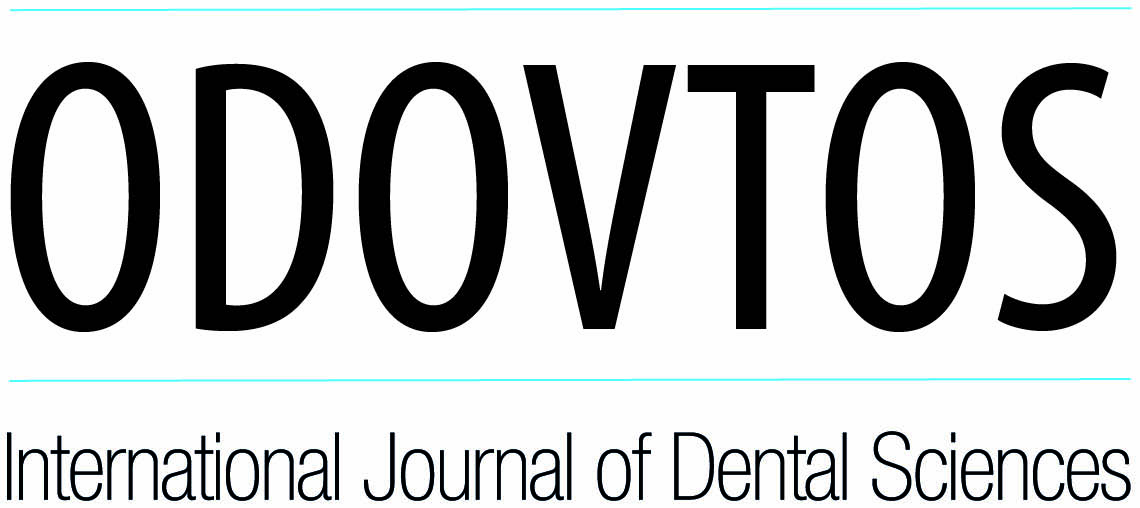Abstract
Hereditary gingival fibromatosis (HGF) is a rare genetic disorder characterized by excessive gum growth, often presenting in childhood or adolescence. Symptoms include difficulties in speech, eating, oral hygiene, and psychological distress. Understanding the molecular mechanisms behind HGF is crucial for identifying potential therapeutic targets. This study aimed to predict interactomic hub genes in HGF using neural networks. We analyzed the GEO dataset GSE4250 using the geor2 tool to identify differentially expressed genes. Cytoscape and the CytoHubba plugin were employed to construct the interactome, ranking hub genes based on centrality scores. A neural network model with an 80:20 train-test split was used to predict hub and non-hub genes, achieving an AUC of 0.853, classification accuracy of 0.720, F1 score of 0.720, precision of 0.720, and recall of 0.720. The resulting network consisted of 147 nodes and 1092 edges, demonstrating moderate heterogeneity and connectivity. Ten key hub genes were identified, offering insights into the molecular basis of HGF. While the neural network model shows promising predictive capacity, further validation in larger cohorts is required. Adding predictive features and functional validation experiments could deepen understanding of HGF's biological mechanisms.
References
Boutiou E., Ziogas I.A., Giannis D., Doufexi A.E. Hereditary gingival fibromatosis in children: a systematic review of the literature. Clin Oral Investig. 2021; 25: 3599-607.
DeAngelo S., Murphy J., Claman L., Kalmar J., Leblebicioglu B. Hereditary gingival fibromatosis--a review. Compend Contin Educ Dent. 2007; 28: 138-43.
Strzelec K., Dziedzic A., Łazarz-Bartyzel K., Grabiec A.M., Gutmajster E., Kaczmarzyk T., et al. Clinics and genetic background of hereditary gingival fibromatosis. Orphanet J Rare Dis. 2021; 16: 492.
Mangino M., Pizzuti A., Dallapiccola B., Bonfante A., Saccilotto D., Cucchiara E. Hereditary gingival fibromatosis (HGF) with hypertrichosis is unlinked to the HGF1 and HGF2 loci. Vol. 116A, American journal of medical genetics. Part A. United States; 2003. p. 312-4.
Dhadse P.V., Yeltiwar R.K., Pandilwar P.K., Gosavi S.R. Hereditary gingival fibromatosis. J Indian Soc Periodontol. 2012; 16: 606-9.
Aghili H., Goldani Moghadam M. Hereditary Gingival Fibromatosis: A Review and a Report of a Rare Case. Case Rep Dent. 2013; 2013: 930972.
Ramalingam K., Yadalam P.K., Ramani P., Krishna M., Hafedh S., Badnjević A., et al. Light gradient boosting-based prediction of quality of life among oral cancer-treated patients. BMC Oral Health. 2024; 24: 349.
Yadalam P.K., Arumuganainar D., Ronsivalle V., Di Blasio M., Badnjevic A., Marrapodi M.M., et al. Prediction of interactomic hub genes in PBMC cells in type 2 diabetes mellitus, dyslipidemia, and periodontitis. BMC Oral Health. 2024; 24: 385.
Pei X., Deng Q., Liu Z., Yan X., Sun W. Machine Learning Algorithms for Predicting Fatty Liver Disease. Ann Nutr Metab. 2021; 77: 38-45.
Yadalam P.K. et al. Gene Interaction Network Analysis Reveals IFI44L as a Drug Target in Rheumatoid Arthritis and Periodontitis. Molecules. 2022; 27: 2749.
Yadalam P.K., Thiyagaraj A. An Immune Interaction Network driven approach for identifying biomarkers for Peri-implantitis. Clin Oral Implants Res. 2020; 31 (S20).
Barrett T., Wilhite S.E., Ledoux P., Evangelista C, Kim IF, Tomashevsky M, et al. NCBI GEO: archive for functional genomics data sets--update. Nucleic Acids Res. 2013; 41: D991-5.
Shannon P., Markiel A., Ozier O., Baliga N.S., Wang J.T., Ramage D., et al. Cytoscape: a software environment for integrated models of biomolecular interaction networks. Genome Res. 2003; 13: 2498-504.
DeAngelo S., Murphy J., Claman L., Kalmar J., Leblebicioglu B. Hereditary gingival fibromatosis--a review. Compend Contin Educ Dent. 2007; 28: 138-43
Coletta R.D., Graner E. Hereditary gingival fibromatosis: a systematic review. J Periodontol. 2006; 77: 753-64.
Ye X., Shi L., Cheng Y., Peng Q., Huang S., Liu J., et al. A novel locus for autosomal dominant hereditary gingival fibromatosis, GINGF3, maps to chromosome 2p22.3-p23.3. Clin Genet. 2005; 68: 239-44.
Hart T.C., Zhang Y., Gorry M.C., Hart P.S., Cooper M., Marazita M.L., et al. A mutation in the SOS1 gene causes hereditary gingival fibromatosis type 1. Am J Hum Genet. 2002; 70: 943-54.
Chen J., Xu X., Chen S., Lu T., Zheng Y., Gan Z., et al. Double heterozygous pathogenic mutations in KIF3C and ZNF513 cause hereditary gingival fibromatosis. Int J Oral Sci. 2023; 15: 46.
Resende E.P., Xavier M.T., Matos S., Antunes A.C., Silva H.C. Nonsyndromic hereditary gingival fibromatosis: Characterization of a family and review of genetic etiology. Spec Care Dentist. 2020; 40: 320-8.
Fang L., Wang Y., Chen X. Gene expression profiling and bioinformatics analysis of hereditary gingival fibromatosis. Biomed Rep. 2018; 8: 133-7.
Zheng F., Chen G., Deng H. Identifying the focuses of hereditary gingival fibromatosis with bioinformatics strategies. Am J Transl Res. 2022; 14: 3741-9.
Chapple I.L.C., Mealey B.L., Van Dyke T.E., Bartold P.M., Dommisch H., Eickholz P., et al. Periodontal health and gingival diseases and conditions on an intact and a reduced periodontium: Consensus report of workgroup 1 of the 2017 World Workshop on the Classification of Periodontal and Peri-Implant Diseases and Conditions. J Periodontol. 2018;89 Suppl 1: S74-84.
Chaurasia A. Hereditary gingival fibromatosis. Natl J Maxillofac Surg. 2014; 5: 42-6.
Afonso R.A., Godinho G.V., Silva C.A., Silva E.J., Volpato L.E. Hereditary Gingival Fibromatosis and Developmental Anomalies: A Case Report. Cureus. 2022;1 4: e24219.
Ferreira Gonçalves C., Mundim A.P., Martins R.F.S., Gagliardi R.M., Santos P.S.S., Ayrton de Toledo O. Hereditary Gingival Fibromatosis: A Case Report with Seven-Year Follow-up. Acta Stomatol Croat. 2018; 52: 254-8.
Wu J., Chen D., Huang H., Luo N., Chen H., Zhao J., et al. A novel gene ZNF862 causes hereditary gingival fibromatosis. Elife. 2022; 11: e66646.
Strzelec K., Dziedzic A., Łazarz-Bartyzel K., Grabiec A.M., Gutmajster E., Kaczmarzyk T., et al. Clinics and genetic background of hereditary gingival fibromatosis. Orphanet J Rare Dis. 2021; 16: 492.
Chen J.T., Lin C.H., Huang H.W., Wang Y.P., Kao P.C., Yang T.P., et al. Novel REST Truncation Mutations Causing Hereditary Gingival Fibromatosis. J Dent Res. 2021; 100: 868-74.

This work is licensed under a Creative Commons Attribution-NonCommercial-ShareAlike 4.0 International License.
Copyright (c) 2025 Deepavalli Arumuganainar, Pradeep K. Yadalam, Carlos M. Ardila.

